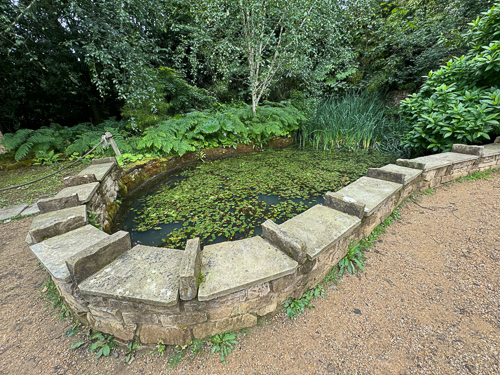July 2024
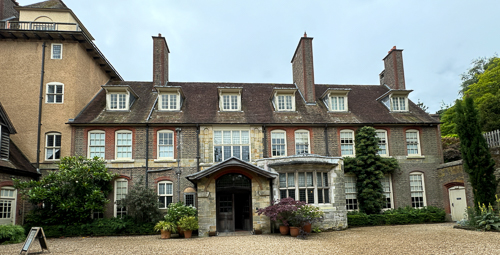
Standen House
Philip Webb designed this house between 1891 and 1894 for London solicitor, James Beale, his wife Margaret, and their family of seven children. The house is constructed in the Wealden vernacular style with sandstone quarried from the estate and locally made bricks and tiles. The interior is decorated with Morris carpets, fabrics, and wallpapers, with furnishings also by Morris.
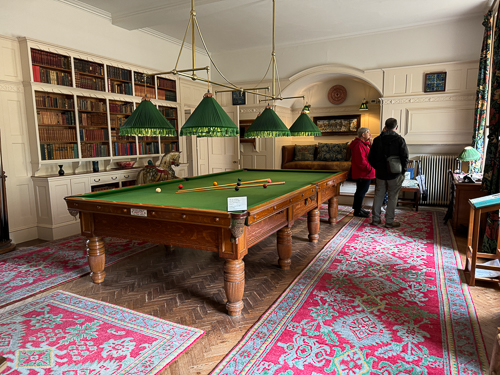
W.A.S. Benson was a renowned Arts and Crafts lighting designer. The lighting over the billiard table is probably by Benson although it is not found in any of his surviving catalogues. The double brass pendant fitting over the billiard table has three parallel arms with six lights. The shades and bulb fittings have copper tulip-shaped holders. The pair of brass bracket wall lights in the alcove have adjustable swivel arms. W.A. S. Benson met Morris and Edward Burne-Jones at Oxford. Morris encouraged Bensonto to set up his own business, and he had done so by the early 1880s.
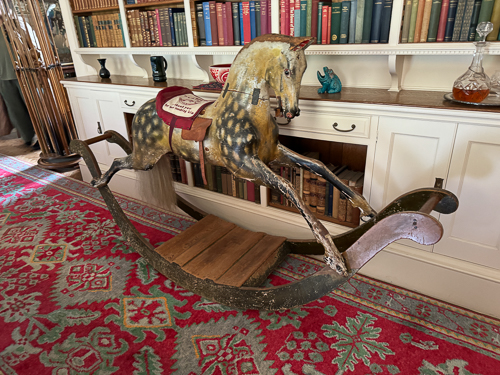
*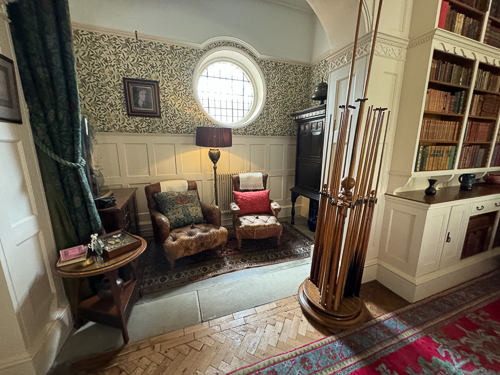
The billiard table is from Cox and Yeman, one of the three major billiard table makers in the Victorian period. This table is laid out for the game of Life Pool, a form of Pocket Billiards. Around 1875 Life Pool merged with Black Pool to form the game of Snooker.
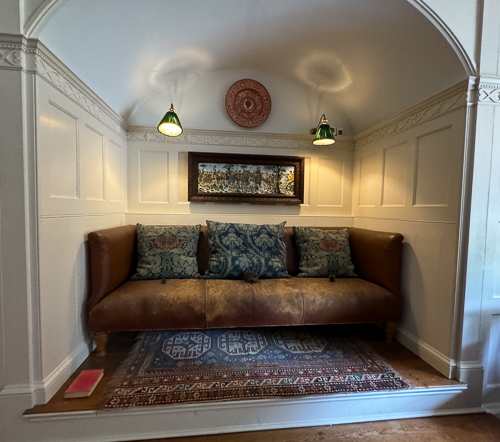
Couch for spectators to watch billiards
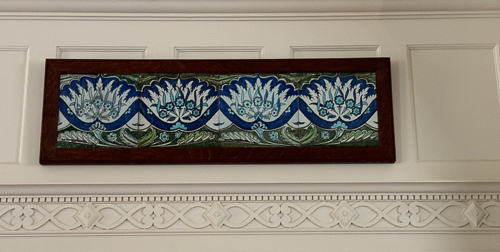
There are a number of tiles by William De Morgan in the billiard room.

Manxman Piano
An oak upright piano of the type known as a Manxman piano after the original designer M.H. Bailie Scott (186501945), who designed them on the Isle of Man. The instrument was made by John Broadwood and Sons. The upper portion is encased in an oak cabinet designed by C.R. Ashbee (1863-1942) and made by the Guild of Handicrafts in 1904. It has two folding doors with metal handles, which, when opened reveal the keyboard and a metal candle holder on either side. The inside is decorated with inset flora plaques in translucent enamels.
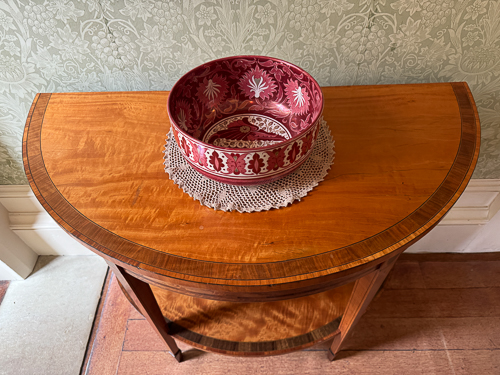
De Morgan bowl
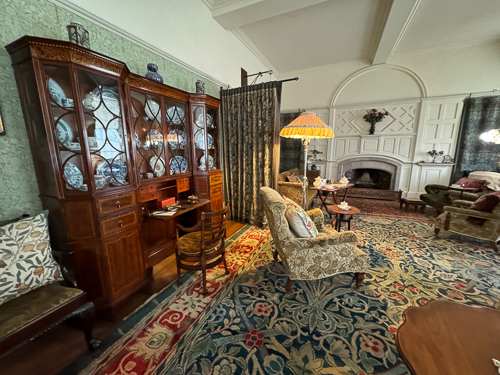
William Morris tapestry hanging behind the chair with William Morris carpet and other furnishings.

From the start, the house had electric power, originally generated by a donkey engine in a shed by the old barn. The house still has its original electric light fittings, designed by W. A. S. Benson.
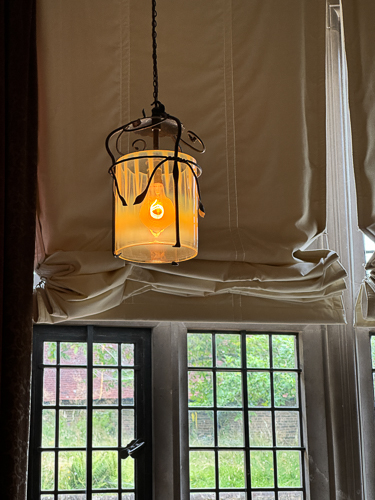
*

This plaster relief by Sir George Frampton (1860-1928) was exhibited at the Royal Academy in 1890 as Mary and Agnes, daughters of L. Karslake. It is mounted in an Italian Renaissance-style frame designed by Lewis Kaarslake, the architect and father of the two girls depicted.
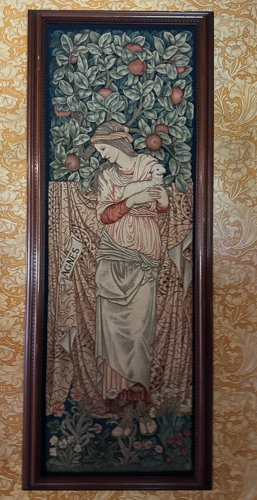
Burne-Jones originally designed the figure of Saint Agnes as a stained glass window. William Morris designed the foliage to turn it into a tapestry, which was made by Morris and Co. and first woven in 1887.
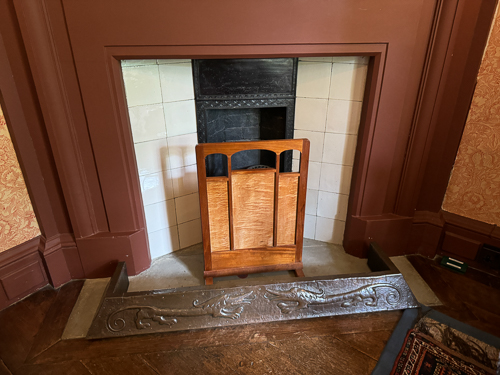
The fender is made of beaten copper by John Pearson. Pearson was an early member of the Guild and School of Handicraft.
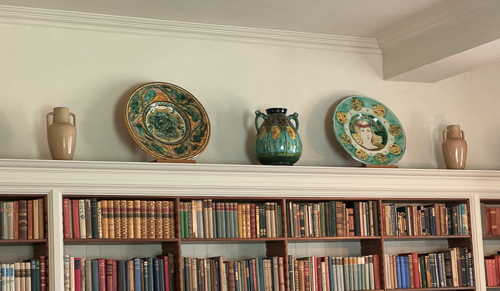
Majolica pottery
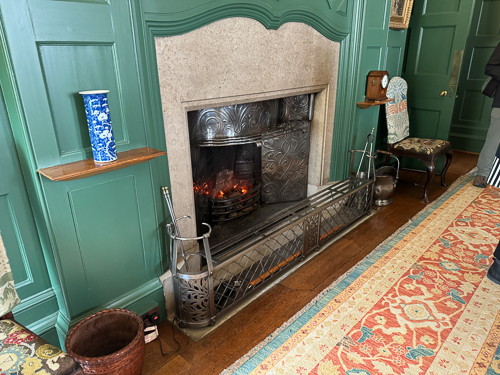
*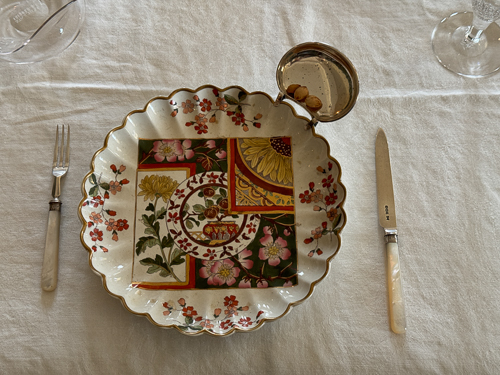
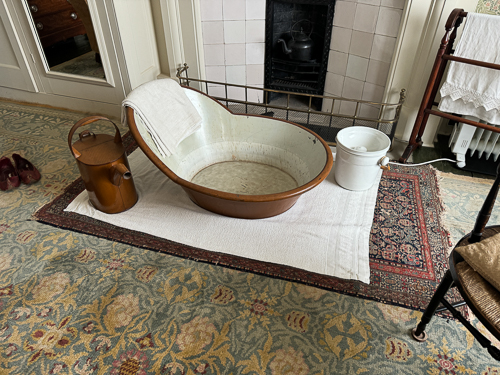
A Victorian tin-hip bath
* *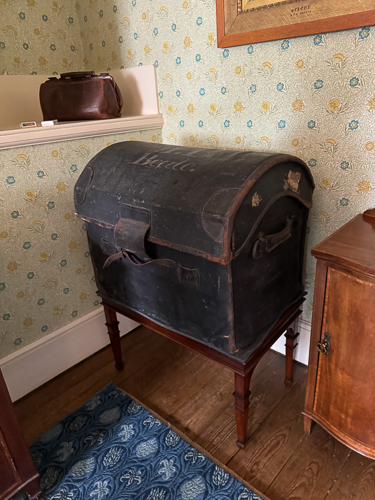
*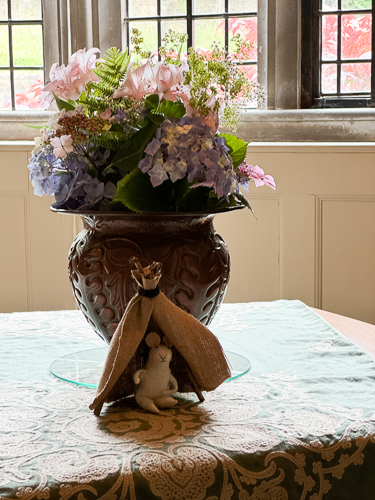
Walking the gardens of Standen House on a dreary rainy day.
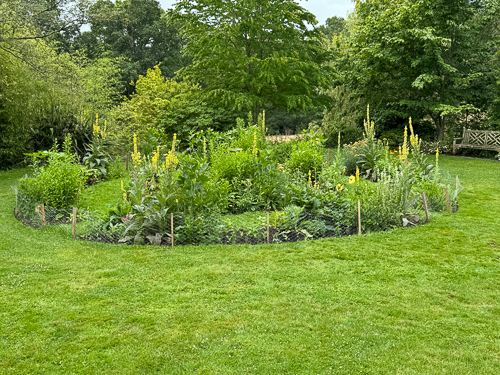
The Beales consulted a London landscape gardener, G.B. Simpson, who drew up a layout of geometrical patterns. Webb, on the other hand, proposed a mixture of natural styles combining old-fashioned formality and compartmentalized gardens.
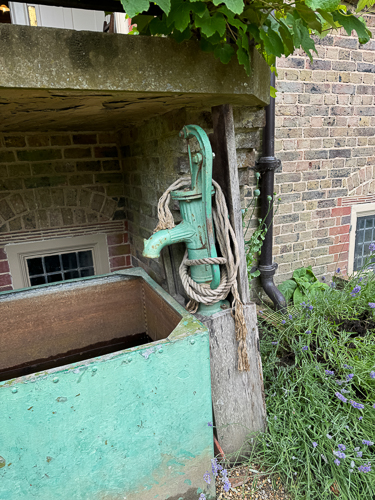 *
*